Customise your garments
At Shriya Enterprise, we understand that safety isn’t one-size-fits-all. That’s why we offer the option to customize your safety garments to meet your unique needs. If you’re a business seeking to add your company logo, customize colour, or include additional features, we’ve got you covered. You can choose from a variety of options, such as reflective strips, adjustable fittings, and specialized pockets. We believe that safety should never compromise style or comfort, so unleash your creativity and design safety gear that represents your unique brand. Explore our “Customize Your Garment” page and start creating your personalized safety gear today. Stay safe and stand out with our customizable options!
Steps:
1
Choose Your Garment:
Start by selecting the safety garment that suits your requirements. We offer a wide range of options, including but not limited to.
2
Select Your Size:
Ensure a perfect fit by choosing your preferred size. Visit our size chart and measurement page ( https://shriyaglobal.com//size-chart/ ) which will help you find the right fit for your customized safety gear.
3
Pick Your Colors:
Personalize your safety garment by selecting your preferred colors. Choose from our color palette to match your branding, personal style, or safety regulations.
4
Add Your Logo or Branding:
For businesses and organizations, we offer the option to add your logo, company name, or branding to your safety gear. This creates a professional and cohesive look for your team.
5
Custom Logo printing or embroidery options:
We provide customization in logo printing through embroidery, screen printing, or heat transfer methods, depending on your garment and design preferences.
6
Reflective Tape Options:
Enhance visibility and safety by selecting the type and placement of reflective tape on your safety garment. This is particularly useful for high-visibility and nighttime work environments.
7
Additional Features:
Customize your safety gear further by adding extra features, such as pockets, zippers, or specialized closures, to make your garment more functional.
8
Quantity and Delivery:
Specify the quantity of customized garments you need, and our team will provide you with a quote and estimated delivery time.
9
Request a Quote:
Ready to get started? Request a personalized quote for your customized safety garments. Our team will review your requirements and provide you with a competitive quote.
10
Expert Support:
If you have any questions or need assistance with customization options, our dedicated customer support team is here to help. We’ll guide you through the process to ensure you get the customized safety gear you need.
At Shriya Enterprise, we believe that safety should be tailored to your specific needs. Customize your safety garments today and experience the difference of safety gear designed just for you. Safety, comfort, and style – all in one personalized package.
Explore Logo Printing Techniques and Choices
We will delve into the exciting world of logo printing, where design meets application. Discover the diverse array of techniques and choices available to businesses and organizations seeking to bring their brand identities to life through printed logos.
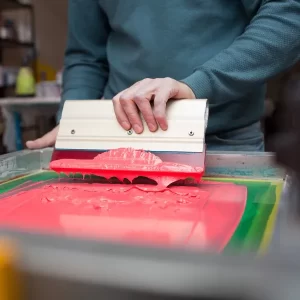
Screen Printing
Technique: Screen printing involves creating a stencil (screen) for each colour and using ink to pass through the screen onto the fabric.
Applications: Apparel, T-shirts, tote bags, and promotional textiles.
Digital Printing (Digital Textile Printing)
Technique: Digital textile printing uses specialized inkjet printers to directly print the design onto fabric. It offers detailed, full-colour prints. The digital design is processed by a computer and then printed onto the fabric.
Applications: Digital printing on fabric is used for a wide range of textile products, including clothing, home textiles (bedding, curtains), soft signage (banners, flags), custom fabrics, and more.
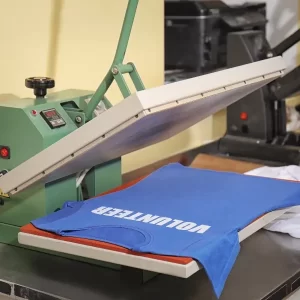
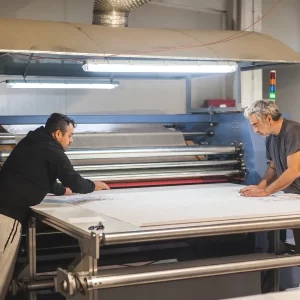
Sublimation Printing
Technique: Dye-sublimation printing uses heat to transfer dye onto fabric, resulting in vibrant and long-lasting prints.
Applications: Custom sportswear, activewear, and polyester-based fabric products.
Heat Transfer Printing
Technique: Heat transfer printing involves transferring a design from a carrier paper to fabric using heat and pressure.
Applications: Customized clothing, promotional products, and fabric crafts.
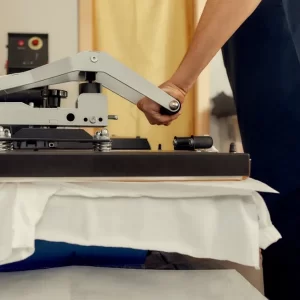
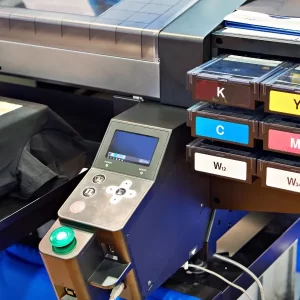
Direct-to-Garment (DTG) Printing
Technique: DTG printing uses specialized inkjet technology to print full-color designs directly onto fabric, including cotton and blends.
Applications: Custom T-shirts, apparel, and small-batch fabric printing.
Rotary Screen Printing
Technique: Rotary screen printing is a continuous process where fabric moves through multiple rotating screens, applying various colors and designs.
Applications: High-quality and high-volume fabric printing for fashion and textiles.
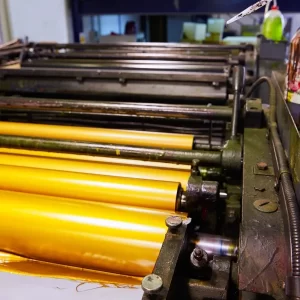
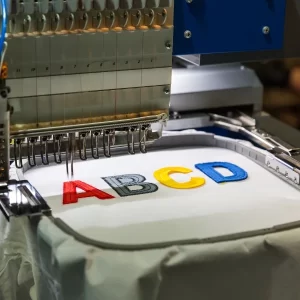
Embroidery
Technique: Embroidery is a manual or automated process that uses specialized embroidery machines or skilled artisans to create designs on fabric by sewing with thread.
Applications: Embroidery is versatile and can be used on a wide range of fabric products, including clothing, uniforms, caps, bags, home textiles (e.g., pillows, curtains), and promotional items (e.g., patches, badges).
Rubber Printing (Plastisol Printing)
Technique: Rubber printing uses a special type of ink known as plastisol, which is a thick, rubber-like ink. The ink is applied to the fabric, and then it is cured at high temperatures to create a durable, raised design.
Applications: Rubber printing is commonly used for T-shirts, sportswear, promotional apparel, and other fabric items.
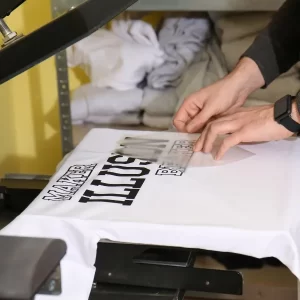
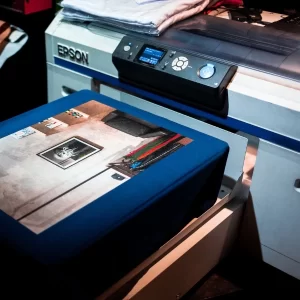
Sole Printing
Technique: Sole printing involves the application of designs or logos directly onto the soles of shoes or other footwear using specialized printing equipment or techniques.
Applications: Sole printing is primarily used for branding, customization, and decorative purposes on footwear products.
Khadi Printing (Khadi Block Printing)
Technique: Khadi printing involves the use of hand-carved wooden blocks to apply ink or dye to the Khadi fabric. The blocks are dipped in ink or dye and then pressed onto the fabric to create intricate patterns and designs.
Applications: Khadi printing is primarily used to create traditional Indian garments, such as sarees, kurtas, and dupattas, as well as home textiles like bedspreads and curtains.
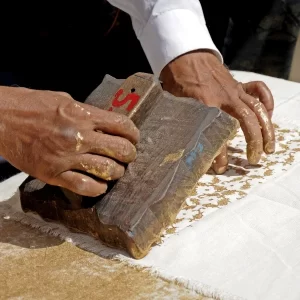

Sticker Printing for Fabric
Technique: Sticker printing involves printing designs, logos, or images onto sticker paper or vinyl material. These stickers can then be adhered to fabric items.
Applications: Stickers for fabric can be used for branding, customization, labelling, or decorative purposes on fabric products such as clothing, bags, hats, and promotional textiles.
Eco-Friendly (Eco Inscription) Fabric Printing
Technique: Eco-friendly fabric printing involves using sustainable practices, materials, and inks to minimize environmental impact.
Applications: This approach can be applied to various fabric printing techniques, including digital, screen, and block printing.
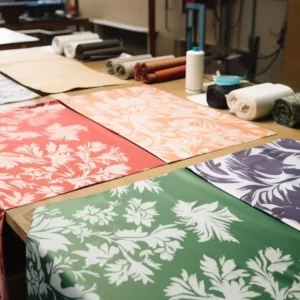
You’ll have a comprehensive understanding of the logo printing landscape, empowering you to make informed decisions that enhance your brand’s visibility and impact. Whether you’re a seasoned marketing professional or a business owner looking to create a lasting impression, this exploration of logo printing techniques and choices will be your valuable resource.

